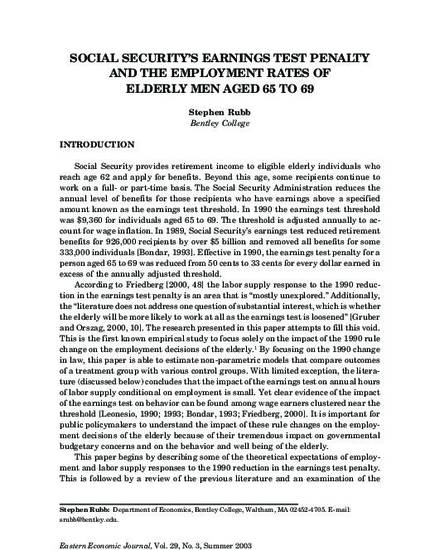
Social Security provides retirement income to eligible elderly individuals who reach age 62 and apply for benefits. Beyond this age, some recipients continue to work on a full- or part-time basis. The Social Security Administration reduces the annual level of benefits for those recipients who have earnings above a specified amount known as the earnings test threshold. Effective in 1990, the earnings test penalty for a person aged 65 to 69 was reduced from 50 cents to 33 cents for every dollar earned in excess of the annually adjusted threshold. The labor supply response to the 1990 reduction in the earnings test penalty is an area that is mostly unexplored. This paper estimates non-parametric models that compare outcomes of a treatment group with various control groups. Clear evidence of the impact of the earnings test on behavior can be found among wage earners clustered near the threshold. This paper describes some of the theoretical expectations of employment and labor supply responses to the 1990 reduction in the earnings test penalty.
